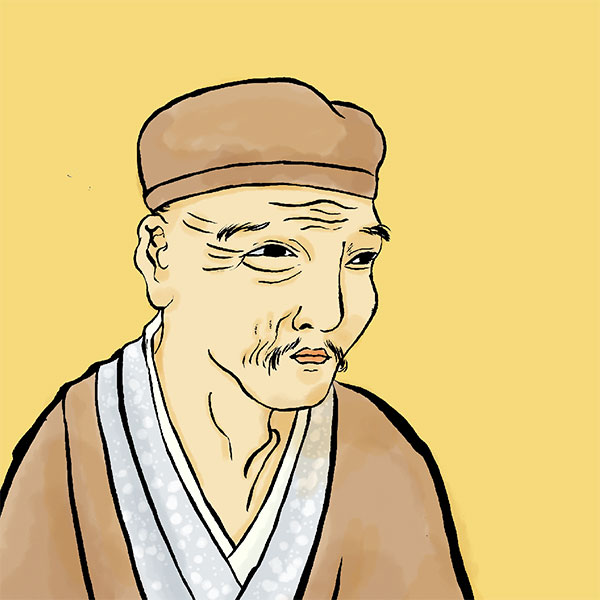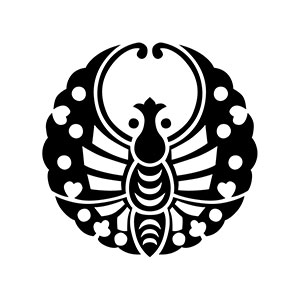- Bitchu Matsuyama DomainA small domain ruled by five families
- The Bitchu Matsuyama domain was a small Tozama domain that ruled part of Bitchu (present-day Okayama Prefecture). Bitchu Matsuyama Castle was the domain office, but since the castle was located on top of a mountain, the domain administration was carried out in a building at the foot of the mountain called Onegaya. Although it is a small domain, there are five families under its control.

Bitchu Matsuyama CastleTakahashi City, Okayama Prefecture
- spring
- summer
- autumn
- winter
- TOP
- China
- Okayama Prefecture
- Bitchu Matsuyama Castle
| Tenshu | Existing castle tower |
|---|---|
| Other name | Takahashi Castle |
| castle construction | 1240 |
| address | Yamashita 1, Takahashi City, Okayama Prefecture |
| telephone number | 0866-22-1487 |
| Opening hours | 9:00-17:30 (Admission until 17:00) |
| closing day | December 29th - January 3rd (Honmaru) |
| Admission fee | Adults 500 yen / Elementary and junior high school students 200 yen |
- Access to Bitchu Matsuyama Castle
- 20 minutes walk from shared taxi from JR West Bitchu-Takahashi Station.
HISTORYBicchu Matsuyama Castle, one of Japan's three major mountain castles
Bitchu Matsuyama Castle is a mountain castle located in Yamashita, Takahashi City, Okayama Prefecture. It has been designated as an important cultural property, and its castle tower is the ``only mountain castle'' among the 12 existing castle towers. The remains of the structure remain from the summit of Mt. Gagyu (altitude 487m) to the south ridge, and it is famous not only in Japan but also abroad for its fantastic appearance floating in a sea of clouds. Let's unravel the history of Bitchu Matsuyama Castle.
- Mt. Gagyu has been a key point of protection since the Kamakura period.
- The first fort was built in 1240 on Mt. Gagyu, where Bitchu Matsuyama Castle is now located. From then until the Genko era (around 1331), a fort was built on the entire length of Mt. Gagyu over a period of about 100 years.
During the Sengoku period, Motochika Mimura ruled Bicchu Matsuyama in this area, and by that time the fort had become a major fort encompassing Mt. Omatsuyama and Mt. Komatsuyama.
When Motochika Mimura went out to attack Naoie Ukita, this fort was occupied by Takasuke Sho and his son Katsushi Sho, but in 1571 the fort was fortified. will take back the
After that, Motochika Mimura defected from the Mori clan to Oda Nobunaga, which led to a conflict between the Mimura clan and the Mori clan called the ``Bicchu War''. During this conflict, the fort was captured by Takakage Kobayakawa of the Mori army, and Motochika Mimura committed suicide. - Bitchu Matsuyama Castle in the Edo period
- In 1600, the Mori clan sided with the western army during the Battle of Sekigahara, and Tokugawa Ieyasu forced the Mori clan out of Bicchu Matsuyama, after which two men, Masatsugu Kobori and Masakazu Kobori, were placed in charge of the castle.
Around this time, the fort was expanded to resemble the current Bicchu Matsuyama Castle, but since it took more than an hour to climb to the top of Mt. Gagyu, an One hut was built at the foot of the mountain.
Regular government affairs are carried out there, and the castle at the top of the mountain is used as a backup castle in case of emergencies. In other words, Bitchu Matsuyama Castle became a castle that was rarely used.
After that, Bicchu Matsuyama Castle's castle tower was constructed from 1681 to 1683, resulting in its current appearance.
The castle remained largely unused until the Meiji Restoration, when it was used as a temporary castle in case of emergencies. - Bitchu Matsuyama Castle after the Meiji period
- In the Meiji period, the One hut at the foot of Mt. Gagyu was demolished, but Bitchu Matsuyama Castle was sold to a merchant family for 5 yen (around 70,000 yen today) in winter solstice money.
However, nothing was done about it and it was left to fester. However, in the early Showa period, an elementary school teacher named ``Tomoharu Shinno'' investigated the ruined Bitchu Matsuyama Castle and wrote a book called ``Bicchu Matsuyama Castle and its Castle Town.'' As a result, calls for the restoration of Bitchu Matsuyama Castle grew, and a budget was set in Takahashi Town.
Later, in 1941, the three buildings, the castle tower, double turret, and Sannohira yagura east earthen wall, were designated as former national treasures. In 1950, with the enforcement of the Cultural Properties Protection Law, it was re-designated as an important cultural property, and in 1956, the castle ruins were designated as a historic site by the country, and Takahashi Town became the management organization. It becomes. Starting in 1994, the main enclosure was restored and the main enclosure south gate, east gate, arm wood gate, alley gate, Go-no-hira turret, Roku-no-hira turret, and earthen walls were restored.
In 2006, it was designated as one of Japan's 100 Famous Castles. - Current Bitchu Matsuyama Castle
- Today's Bitchu Matsuyama Castle, like Takeda Castle in Hyogo Prefecture, is popular as a castle floating in a sea of clouds, and is visited by many tourists throughout the year.
In 2018, a stray cat who settled in the castle was appointed as the ``Cat Castle Lord'' and is now active as a tourism ambassador.
On the other hand, tree roots that have penetrated into the stone walls are growing, and reports of the risk of stone walls collapsing and damage from vermin have been reported one after another, and measures are urgently needed to preserve the castle.
The best time to see a sea of clouds is from late September to early April, or early from October to early December.
In winter, there is snow, so be sure to check the weather forecast before heading out.
Read biographies related to Bitchu Matsuyama Castle
- Masatsugu KoboriFather of Kobori Enshu, who was famous for his garden creation.
- Even during the Sengoku period, which was filled with battles, the flower of culture flourished. Momoyama culture. Cultural leaders included Kano Eitoku, a painter, and Sen no Rikyu, a tea ceremony master. Following in the footsteps of Sen no Rikyu, Kobori blossomed into talent during the Edo period.

The history of the Bitchu Matsuyama domain, whose domain is Bitchu Matsuyama Castle.
| Domain office | Bitchu Matsuyama Castle |
|---|---|
| old area | Bizen country |
| stone height | 50,000 koku |
| Fudai/Tozama | Fudai |
| main lord | Mr. Mimura, Mr. Ikeda, Mr. Mizutani, Mr. Itakura |
| Estimated population | 26,000 people (first year of the Meiji era) |
Matsuyama, which was a territory of the Mori family, was occupied by Masatsugu Kobori, Nagayuki Ikeda, Katsutaka Mizutani, Shigehiro Ando, Sokei Ishikawa, Katsumi Itakura, and others.













